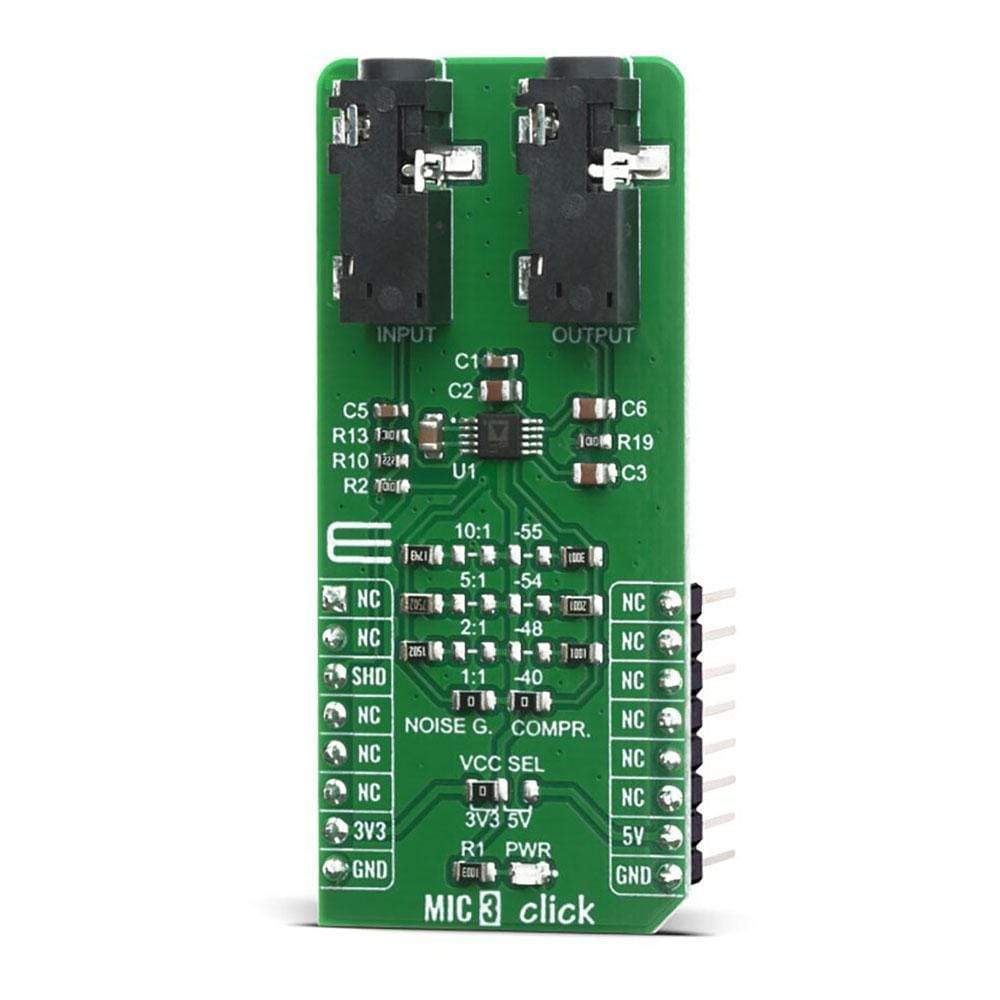
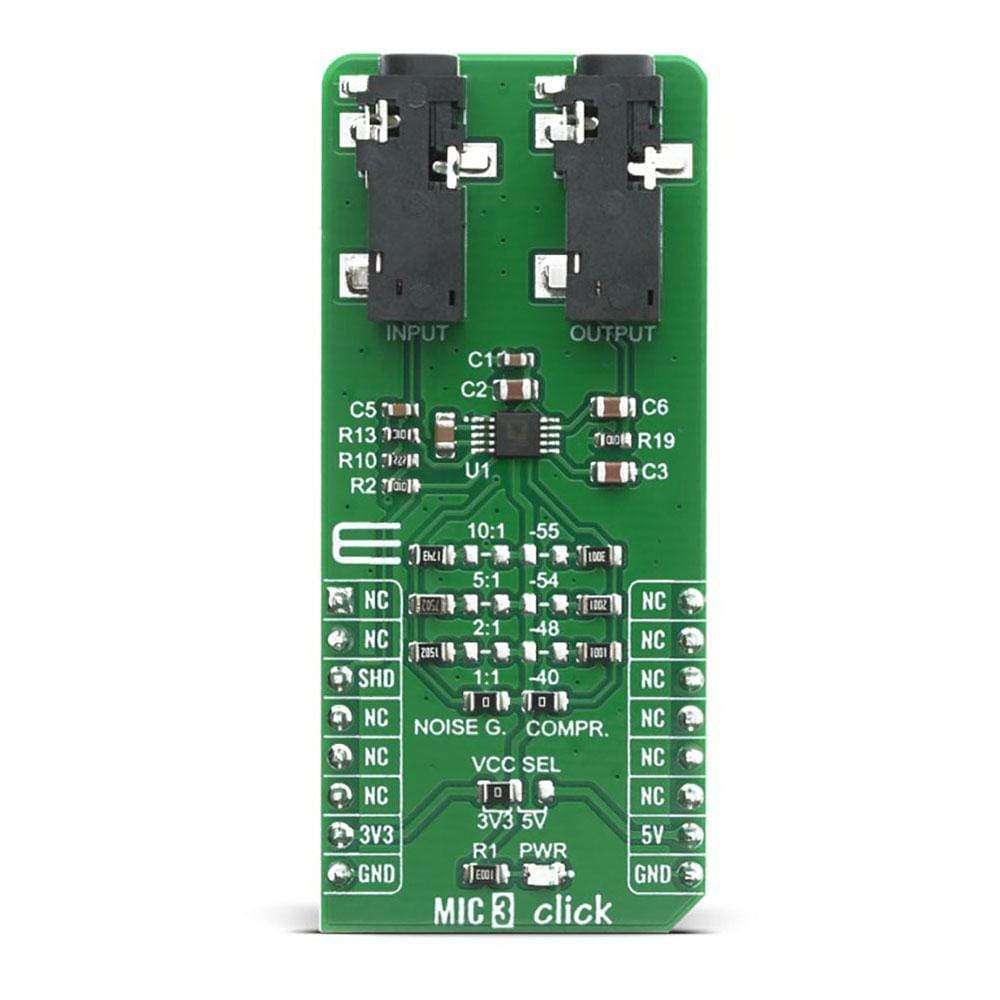
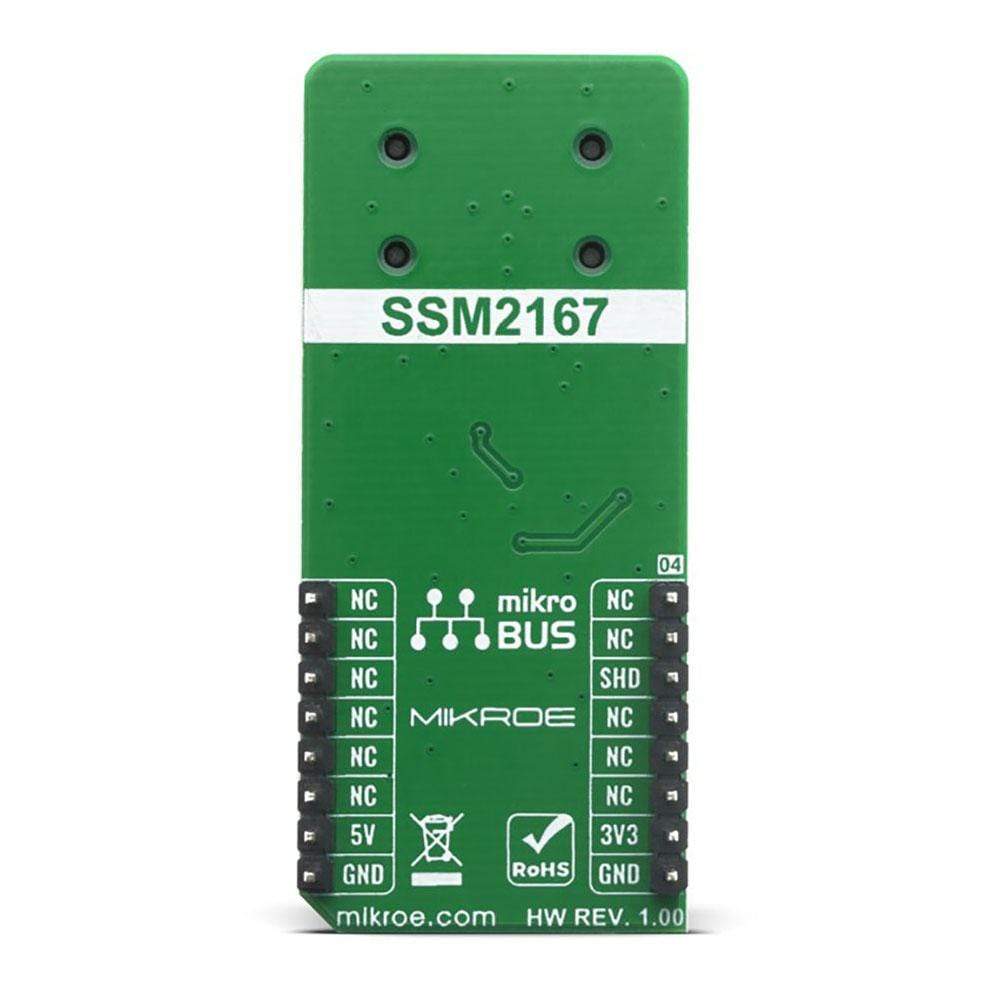
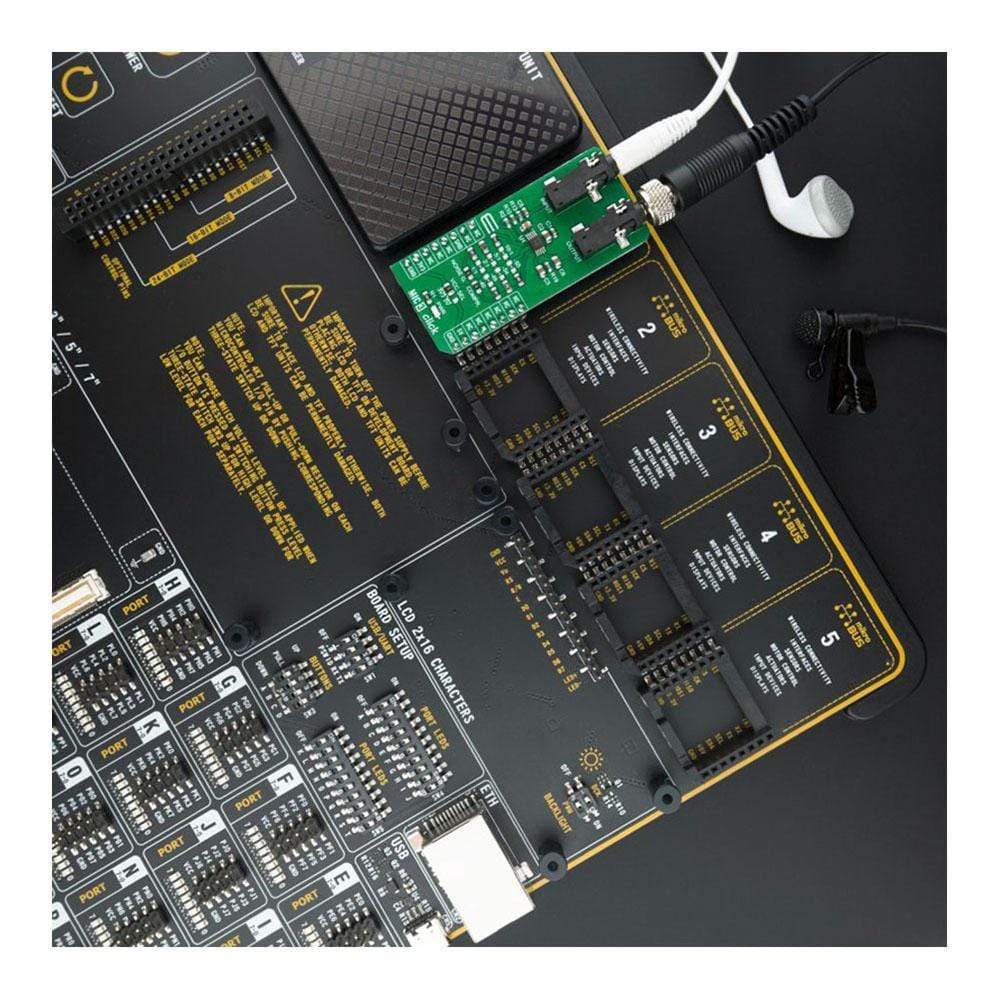
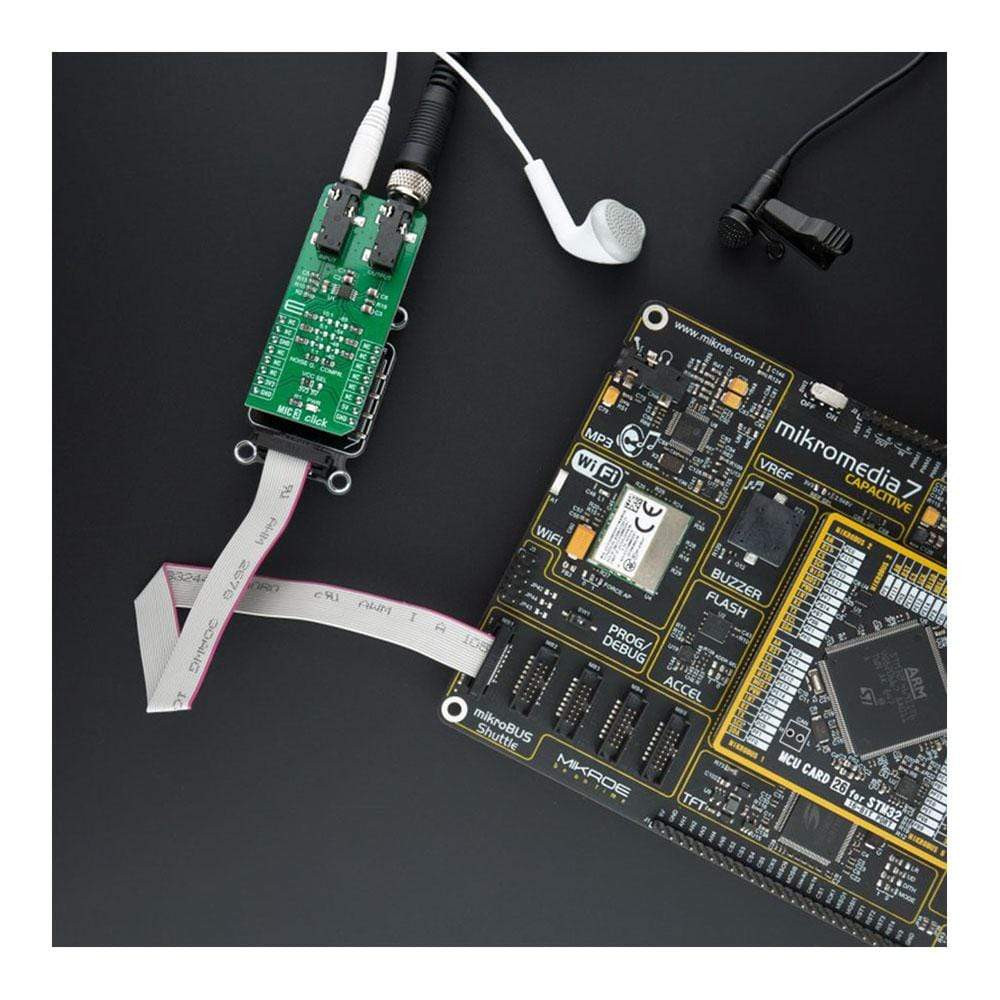
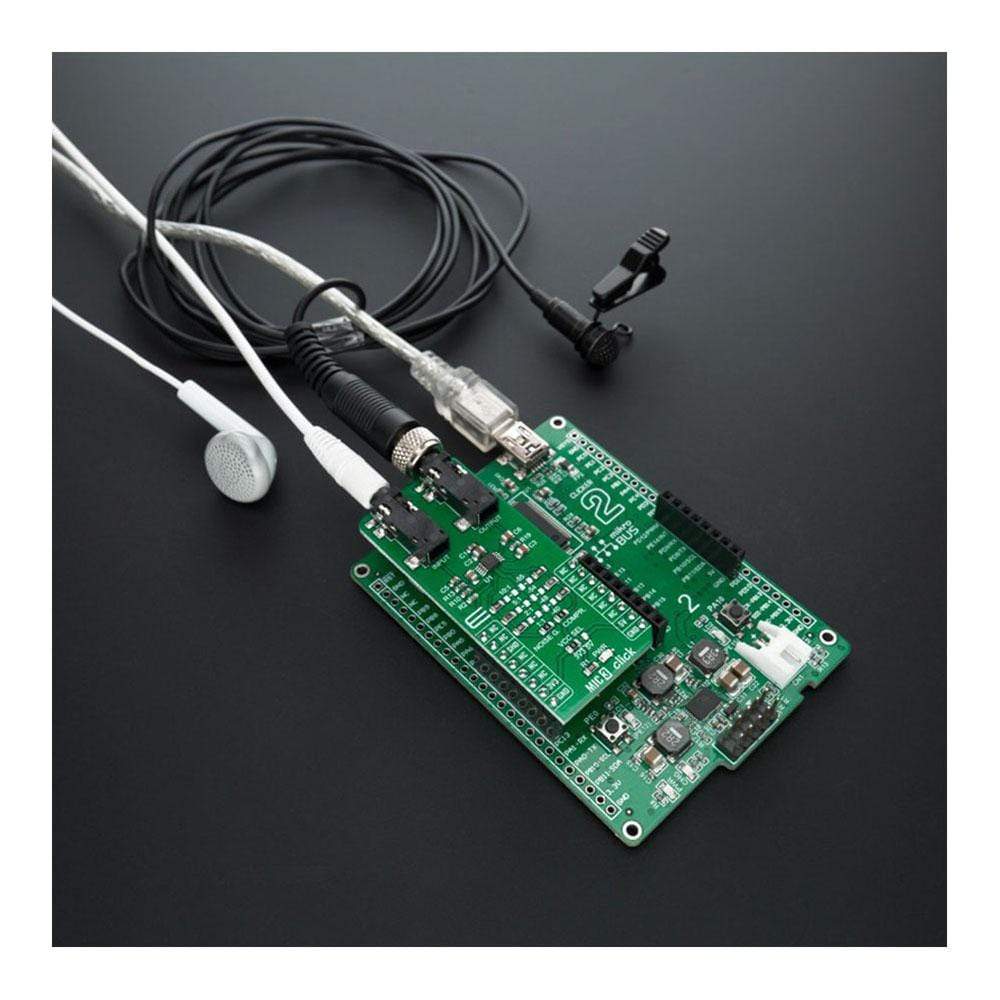
Overview
The MIC 3 Click Board™ features the SSM2167-1RMZ-R7, a Microphone Preamplifier, from Analog Device. This Click Board™ is a low voltage Microphone preamplifier with Variable compression and noise gating. The MIC 3 Click is a very easy solution to work with it, which makes it an ideal solution for using it in desktop, portable or palmtop computers, telephone conferencing, communication headsets, two-way communication, surveillance system where the microphone is needed, stethoscope, karaoke and DJ mixers.
The MIC 3 Click Board™ is supported by a mikroSDK compliant library, which includes functions that simplify software development. This Click Board™ comes as a fully tested product, ready to be used on a system equipped with the mikroBUS™ socket.
Downloads
Das MIC 3 Click Board™ verfügt über den SSM2167-1RMZ-R7, einen Mikrofonvorverstärker von Analog Device. Dieses Click Board™ ist ein Niederspannungs-Mikrofonvorverstärker mit variabler Kompression und Rauschunterdrückung. Das MIC 3 Click ist eine sehr einfach zu handhabende Lösung, die es zur idealen Lösung für den Einsatz in Desktop-, tragbaren oder Palmtop-Computern, Telefonkonferenzen, Kommunikations-Headsets, bidirektionaler Kommunikation, Überwachungssystemen, bei denen das Mikrofon benötigt wird, Stethoskopen, Karaoke- und DJ-Mixern macht.
Das MIC 3 Click Board™ wird von einer mikroSDK-kompatiblen Bibliothek unterstützt, die Funktionen enthält, die die Softwareentwicklung vereinfachen. Dieses Click Board™ wird als vollständig getestetes Produkt geliefert und ist bereit für den Einsatz auf einem System, das mit der mikroBUS™-Buchse ausgestattet ist.
| General Information | |
|---|---|
Part Number (SKU) |
MIKROE-4136
|
Manufacturer |
|
| Physical and Mechanical | |
Weight |
0.021 kg
|
| Other | |
Country of Origin |
|
HS Code Customs Tariff code
|
|
EAN |
8606018717682
|
Warranty |
|
Frequently Asked Questions
Have a Question?
Be the first to ask a question about this.






